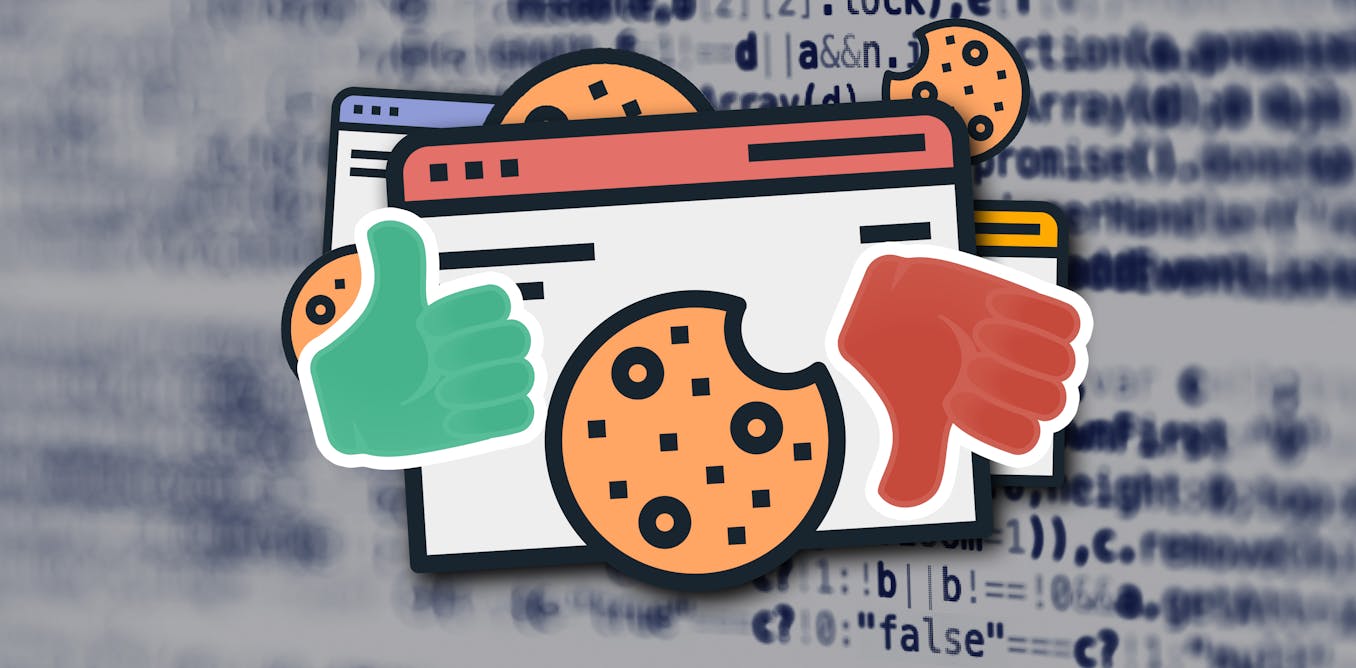What does it mean to ‘accept’ or ‘reject’ all cookies, and which should I choose?
-
I have it, and it does help, but it seems more often than not I still get a pop up for cookies.
You can report websites that it failed to act upon in the extension window
-
If I'm given the option, I always choose to reject all. I don't know if the company behind it actually sees that or not, but it makes me feel better anyway.
If the site doesnt work without cookies depends on how much I want to browse I will accept knowing that my browser nukes everything or I will just not browse that site.
-
This post did not contain any content.

What does it mean to ‘accept’ or ‘reject’ all cookies, and which should I choose?
Cookie consent pop-ups are annoying, but it’s worth understanding what you’re agreeing to.

The Conversation (theconversation.com)
I use uMatrix to control exactly which cookies I accept, and only accept what I need.
-
That's unnecessary. Not clicking anything is legally identical to opting out. So just install uBO and add the cookie list filter and block those annoying banners entirely.
You're not wrong, but in my experience those lists cause some sites to not work anymore, the whole site will stay dark waiting for the cookie pop-up for example, or you can't scroll. I still use uBO to block ads but Consent-O-Matic gives me a better experience on those sites.
-
You're not wrong, but in my experience those lists cause some sites to not work anymore, the whole site will stay dark waiting for the cookie pop-up for example, or you can't scroll. I still use uBO to block ads but Consent-O-Matic gives me a better experience on those sites.
Did you try to dismiss then manually or use the filter list?
-
Did you try to dismiss then manually or use the filter list?
Disabling uBO, dismissing the cookie pop-up and then re-enabling uBO usually works, but is a lot more work than just running Consent-O-Matic in the background.
-
Disabling uBO, dismissing the cookie pop-up and then re-enabling uBO usually works, but is a lot more work than just running Consent-O-Matic in the background.
You didn't answer my question. Do you have to cookie list filtered in uBO or are you just using the default list?
-
You didn't answer my question. Do you have to cookie list filtered in uBO or are you just using the default list?
I was using the cookie lists but I stopped using them due to the aforementioned problems.
-
I was using the cookie lists but I stopped using them due to the aforementioned problems.
ah ok, sorry.
-
tl;dr: "Reject All" will not break the site.
Also, technically there's still a cookie after that:
The choice is recorded in a consent cookie
The article seems to ride on people's anxiety about walls of text & choices presented by various cookie popups (not all of which even have a "Reject all" option) and IMHO isn't quite clear enough that "Reject all" is the best option for 99% of use cases.
You do not need to ask for consent to use functional cookies, only for ones that are used for tracking, which is why you'll still have some cookies left afterwards and why properly coded sites don't break from the rejection.
Most websites could strip out all of the 3rd party spyware and by doing so get rid of the popup entirely. They'll never do it because money, obviously, and sometimes instead cripple their site to blackmail you into accepting them.




